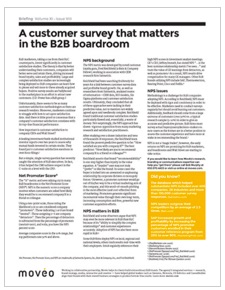Now that we’re a month into 2016, your organization should have a handle on key metrics from the past year and be prepared to apply key insights to a new 2016 strategy. But processing those can be overwhelming. With today’s nearly limitless available methods of data capture, it’s all too easy to collect more data than you can actually use, misinterpret the data you need and miss valuable insights. However, by picking some essential KPIs and focusing your efforts on interpreting the insights they carry, you can launch more effective campaigns in the upcoming year.
Focus on these three often-overlooked metrics in your previous campaigns to get ahead in your future plans:
Do you ever take the time to look at the spots in the funnel where the majority of your leads are lost? Are your leads turning to a competitor due to a weak or inconsistent communication about your differentiators during the consideration stage of their decision-making process? Or are you losing them during the awareness phase because you’re failing to capture their contact information and nurture them accordingly? Take a look back at the flow of leads over the past year and note the sticking points in your communications. In 2016, plan ways to smooth out the buyer’s journey in these problem areas, perhaps through more targeted content or better-timed communications.
Beyond page views and white paper downloads, do you know how your audience interacted with your marketing content in 2015? Did they follow links and calls-to-action on your blogs? Did they share that content? How long did they spend with it, and did they read the whole piece or just open it?
Go deeper than simply tracking open rates and bounce rates to find how contacts are truly engaging with your work. Use tools like Google Analytics’ Behavior Flow and heat maps to better understand how your audience interacted with your content in 2015. Then, incorporate these findings into your 2016 content marketing strategy, giving your audience more of what intrigues them and using the most effective tactics to usher leads further through the funnel.
While following the actions of your leads and prospective clients is great, you must also remember to measure your current customers’ activity and loyalty to your brand. A good way to do this is by tracking your Net Promoter Score®. An organization’s Net Promoter Score® is a numeric score that represents how likely customers are to recommend an organization to their friends or colleagues. The Net Promoter Score® was created to improve on older, unreliable customer satisfaction surveys, with a measure that goes beyond satisfaction to get at whether a customer is truly a brand advocate.
Do you have a record of your organization’s Net Promoter Score® in 2015? If not, it’s time to reach out to your customers and measure your current score. Then, use this metric to take stock of where you stand in terms of brand advocacy, and plan strategically to improve your score through initiatives that engage all departments in improving customer relationships and satisfaction.
For more on why Net Promoter Score® is such a useful indicator of marketing success, read our white paper, Net Promoter Score: A powerful measurement.
